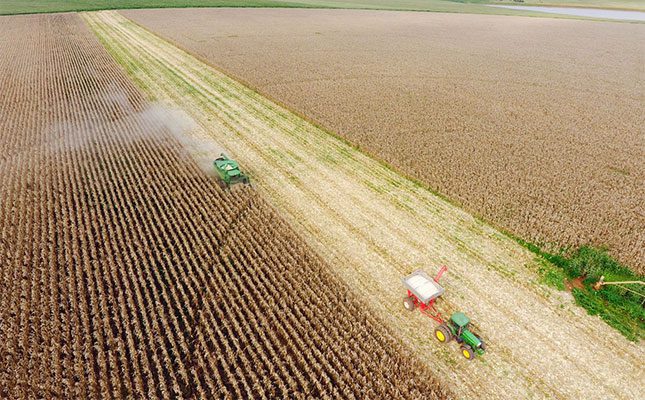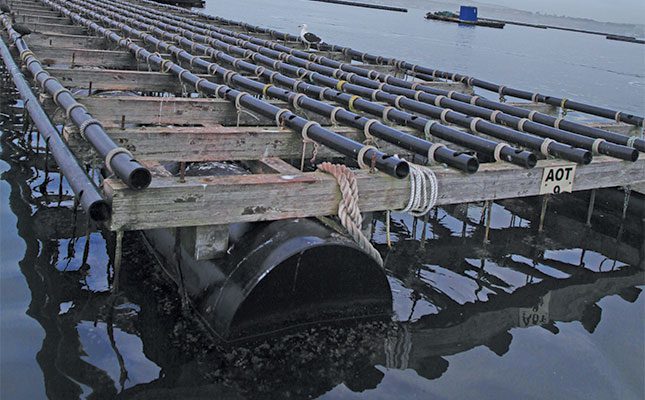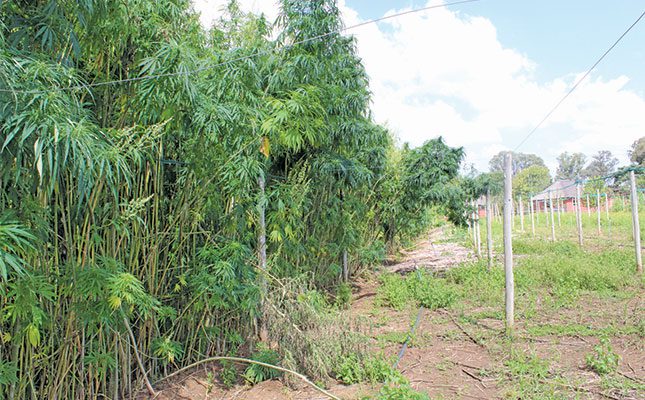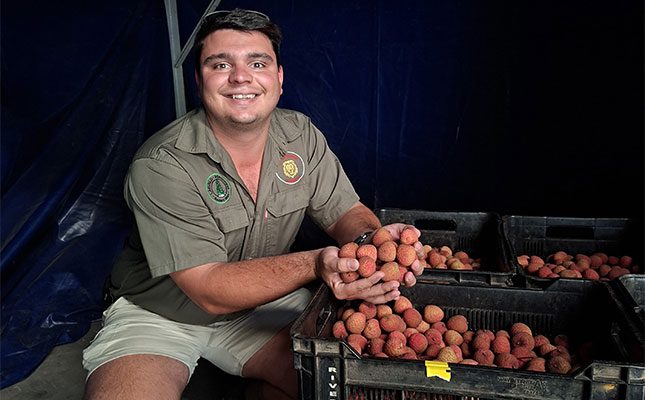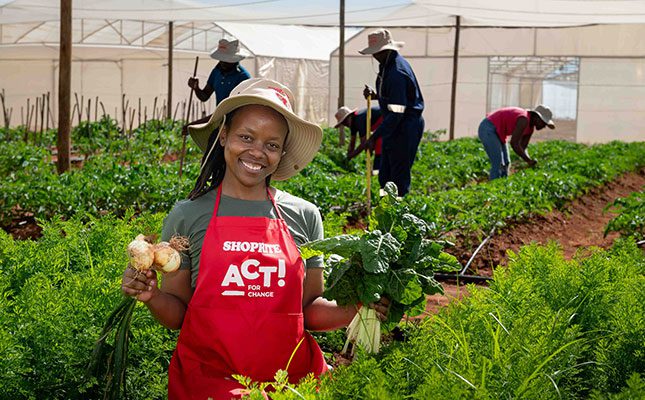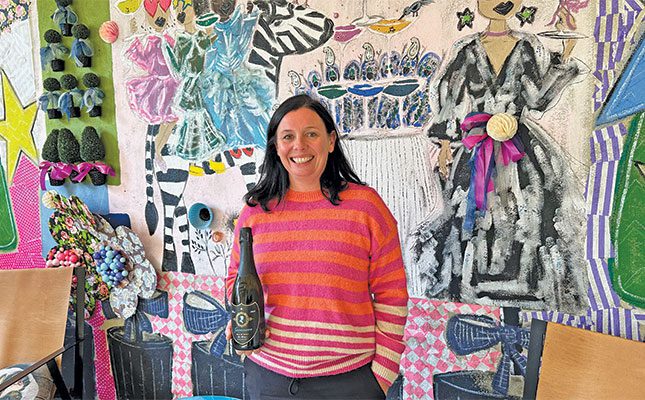
Photo: Brian Berkman
Although the role that women play in agriculture (and in the world as a whole) remains entirely underestimated, the Champagne and Méthode Cap Classique (MCC) industry might not be the global powerhouse it is today without Barbe-Nicole Ponsardin.
Born in Reims, France, in 1777, Ponsardin become known as the Widow Clicquot at 27
when she continued her late husband’s business.
Not only is she credited with changing the industry by solving one of its greatest problems – how to successfully remove the yeasty sedimentation from the bottle after fermentation – but also for the remuage or riddling system that began in her kitchen when she made a series of riddled holes in her timber kitchen table.
She placed wine bottles neck-down in the holes and periodically turned them until the sediment collected in the neck.
“After chilling and removing the cap, the pressure in the bottle, greater than in the tyres of your car, pops out the dead yeast cells called lees in the disgorging process, leaving only a clear liquid in the bottle,” says Melissa Genevieve Nelsen, founder of Genevieve MCC (Méthode Cap Classique), produced on Klein Botrivier Farm, while speaking to Farmer’s Weekly about inspirational women in her life.

She talks about her mother’s response when young Nelsen was asked what she wanted to do with her life and proffered “being an air hostess” as a possibility. Her mother said: “If you want to fly, why not be the pilot?”
Nelsen, who later qualified as a pilot, says: “I learnt the importance of precision from being a pilot and how to calculate the fine line between stupidity and bravery. I’m also not apprehensive about what is unknown, which has been beneficial.”
Family inspiration
Her parents, both great Francophiles, gave Nelsen her second name after Geneviève, the patron saint of Paris. Although born and raised in Elgin in the Western Cape, it is the City of Light, as Paris is known, that instilled in her a joie de vivre and passion for fine food and drink, epitomised by the Champagne lifestyle.
Thus, calling her Cap Classique (traditionally made sparkling wine) ‘Genevieve’ was an easy choice.

Nelsen started her business by first buying grapes in from a beautiful pocket of older, well-established Chardonnay grapes along the Van der Stel Pass in Bot River, and under the mentorship of Ross Gower started the Genevieve production. Only in 2017 did she manage to buy a farm in Bot River with established vineyards to grow her enterprise.
Even from her first vintage in 2008, released in 2010 and comprising 5 000 bottles (an amount that Nelsen jokes was a little more than she and her friends would drink), she was determined to position Genevieve as a premium product at a concomitant price.
“In the ensuing years, I haven’t managed to increase the price by more than an inflationary amount, but I’ve expanded the range. Although costs have tripled, I haven’t been able to triple the price,” she says.
After working as a pilot, she decided she preferred being on terra ferma, and Bot River in the Western Cape, close to her native Elgin, called.
‘Serious yet playful’ is her buzz phrase, and the word ‘Journey’ is on the picturesque wine-tasting barn. Peacocks and hens scatter as one approaches, along with a chicken or two.
Her faithful rescue hound, Lilly, is her constant companion.
The Blanc de Blanc was the first 100% Chardonnay she produced. In 2020, 13 000 bottles were produced, she says, adding that the grapes came from her favoured Van der Stel pass but also included another old Chardonnay block closer to Bot River. Minimal yet precise intervention is how she describes her winemaking approach.
The Genevieve Cap Classique signature
Following the Cap Classique Producers’ Association’s regulations of only whole-bunch pressing, she ensures the pressure is relatively gentle on the skins and doesn’t crush the seeds or stalks. This process minimises tannins and preserves great acidity, which contributes to the delicacy of her wine.
Once the wine has been bottled and sugar and yeast have been added to start the second fermentation, it is matured for 42 months. Yeast lees maturation gives tertiary flavours to the wine before disgorgement.
“All these methods contribute to the Genevieve Cap Classique signature candied citrus, yellow peach, honey melon and almond on the palate. The high acidity, minerality and effervescence make this an especially food-friendly wine, and at 12% alcohol it also means I can enjoy the whole bottle,” says Nelsen.
To further her goal of offering a premium product, the RD 2013 is Extra Brut and comes from an 18-year old Chardonnay vineyard. And while also picked at 19 balling, it is matured on the lees for 10 years.
“The RD [recently disgorged] is a style of winemaking where the wine is matured on crown cap for the entire duration while on lees, instead of cork. The naturally higher acidity achieved from earlier picking also acts as a natural preservative, helping to maintain its structure and giving good longevity to the wine. Ageing is one of the prime methods of creating a beautiful mousse.
“I can taste complex fruit largely as a result of Bot River’s cool climate and the Walker Bay winds that bring special complexity and depth to this fine wine,” she says.
She adds that all the additional costs in maturing the wine for a further four years after production in temperature-controlled storage adds considerably to the end product’s cost.
“It’s a fine balance between creating a viable business making Cap Classique and selling the current vintage on the market. I need [to maintain] the correct cycle to manage my cash flow and cover the costs for the following vintage’s maturation and storage.
“The decision to expand the range with a Rosé NV (non-vintage) made with 100% wonderful Bot River Shiraz already on the farm is based on working with what we have. With this wine it is important to me that there is enough balance in acidity, flavour and mousse in the first sip to encourage your intrigue to have another, and another,” she says.
“I like that the Bot River Shiraz is more feminine and can have a Syrah style thanks to the cooler climate. This means that the flavours that might contribute to a full-bodied red wine is light enough to easily enjoy as an MCC.”
The Shiraz, Clone SH21K, is from a 16-year-old vineyard planted on Bokkeveld Shale in a north-south direction on rootstock R110.
“I’m looking for cherry and pomegranate on the nose, and white strawberry and white peach on the palate along with a fine mousse and a silky, lingering finish,” she says.
The Shiraz is picked at 18,5 balling.
Although her winemaking is focused on women in terms of taste profile and label design with a feminine cameo as a label image, as a savvy marketer she selected the turquoise-blue colour so that a man would also feel entirely comfortable carrying the bottle.
Getting the wine listed in fine restaurants was Nelsen’s primary strategy. La Colombe, Ellerman House, and The Mount Nelson’s Planet Bar and Restaurant all contributed to brand positioning.
“At first, I did everything myself but now I have sales and export agents acting for me. Sixty percent of sales go to the local market and 40% is exported to, in order of volume, the US, the Netherlands, UK, Canada, Japan and Hong Kong.”
Email [email protected] or visit genevievemcc.co.za.

